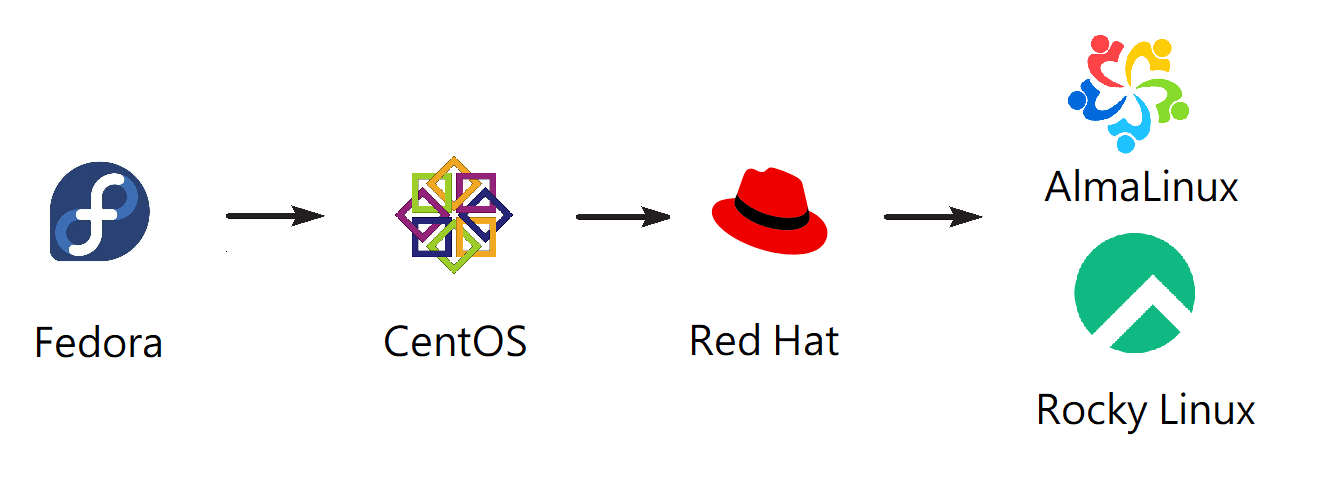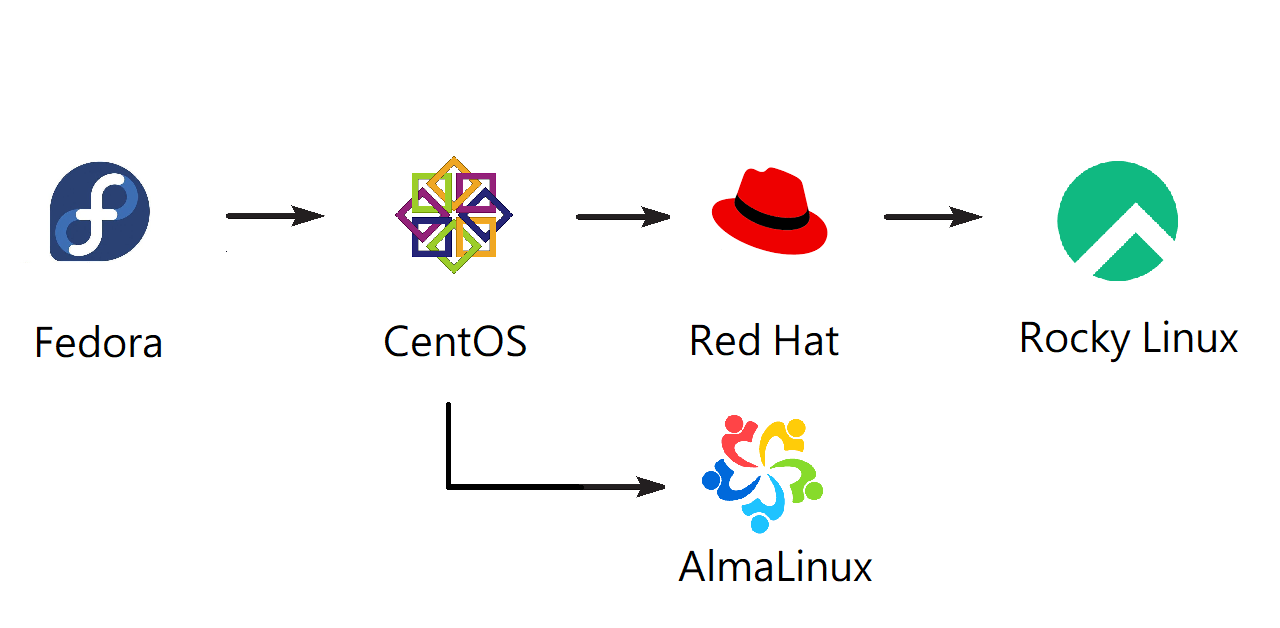Red Hat Enterprise Linux (RHEL) is a popular commercial Linux distribution, developed by, as you probably guessed, Red Hat. An RHEL-based operating system is a Linux distribution that is derived from or compatible with Red Hat Enterprise Linux. These operating systems are often freely available and supported by a large community (in some cases as an Open Source operating system).
The most well-known players in the RHEL ecosystem
The most well-known players in the RHEL ecosystem are:
Fedora: Fedora is a community-driven project that functions as the upstream source for RHEL. This means that much of the technology and features developed in Fedora eventually end up in RHEL. Fedora is known for its innovation and offering the latest technologies.
CentOS: Originally a direct downstream clone of RHEL, known for its reliability and stability. It was based on the source code of RHEL, making it almost a one-to-one copy of RHEL. At the end of 2020, support for CentOS ended and CentOS continued as CentOS Stream.
CentOS Stream: The development branch of Red Hat Enterprise Linux where continuous rolling updates are delivered. CentOS Stream sits between Fedora and RHEL. You can compare it to 'rolling release' Linux distros with one major difference from normal rolling releases: major releases of CentOS Stream are tied to Red Hat major releases.
Red Hat Enterprise Linux (RHEL): The core of the ecosystem, RHEL is a commercial distribution focused on stability, security, and support for business environments (i.e., aimed at the corporate market). RHEL requires a paid subscription for full access to software updates and professional support. The source code of Red Hat was available via git.centos.org until July 2023, and all downstream projects of RHEL were based on it. After that, Red Hat announced that the source code of Red Hat would no longer be freely available.
AlmaLinux and Rocky Linux: These distributions emerged in response to the shift of CentOS to an upstream project. They are both intended as direct replacements for traditional CentOS and offer a free, enterprise-level operating system that closely aligns with RHEL.
AlmaLinux was founded by CloudLinux but is now owned by the non-profit AlmaLinux Foundation.
Rocky Linux was founded by one of the original founders of CentOS and is now under the Rocky Enterprise Software Foundation.
Although both started from the same point as a downstream build of Red Hat, things have changed since the summer of 2023. Red Hat decided to no longer make the source code for Red Hat publicly available. In response, AlmaLinux and Rocky Linux have taken different approaches:
-
AlmaLinux: Now positions itself in the same place as RHEL in the RHEL ecosystem. This means that AlmaLinux uses CentOS Stream as a basis (just like RHEL), but determines for itself when to implement updates/patches.
-
Rocky Linux: Remains a downstream build of RHEL but now uses some other sources to obtain the source code, such as the code in the UBI container image of RHEL. This makes Rocky Linux not only one of the largest RHEL-based distributions but also the only major downstream build among the major players. However, it is not ruled out that due to future decisions by Red Hat, Rocky Linux may also take a different position in the RHEL ecosystem, similar to AlmaLinux.
The positions/roles of the most well-known players in the RHEL ecosystem
By now, you probably have a good idea of the positions of the various operating systems in the larger RHEL ecosystem, but we’ll summarize it:
-
Fedora is at the beginning of the development cycle, where new ideas and technologies are tested.
-
CentOS Stream provides a preview of what the next version of RHEL will be, allowing developers and system administrators to prepare for and contribute to the future of RHEL.
-
RHEL is the end product, intended for businesses that need a stable and supported operating system with a wide range of certified applications and hardware.
-
AlmaLinux and Rocky Linux serve as free, open-source alternatives to RHEL, aimed at users who seek the stability and compatibility of RHEL without the subscription model.
Based on the above, you can traditionally distinguish three main roles:
-
Innovation: new concepts/packages are tested and developed
-
Standardization: as the concepts/packages from the innovation phase mature, they are integrated and stabilized (i.e., no major changes anymore). General and security updates are also implemented.
-
Expansion: The standard set in the previous step serves as a stable foundation. Only additional (minor) features that do not impact the foundation are added.






